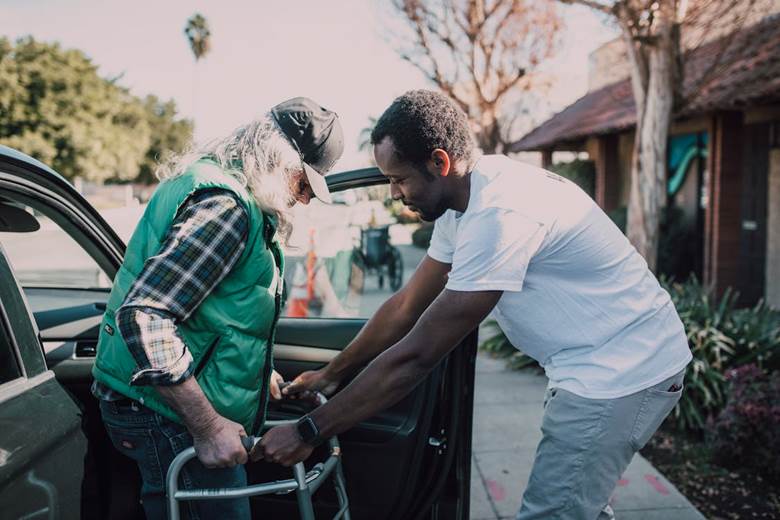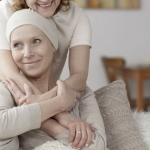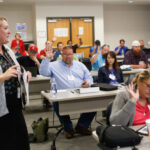In Canada, falls among seniors represent a growing concern—one with both immediate physical dangers and long-term impacts on health, mobility, and independence. According to the Public Health Agency of Canada, falls account for over 80% of injury hospitalizations in adults over 65. These accidents don’t just cause bruises and broken bones; they can change a person’s ability to live independently. While it’s easy to assume falls happen due to simple clumsiness or age, we often overlook medical and environmental triggers that increase the likelihood of falling. Understanding these risks allows seniors, caregivers, and healthcare providers to take preventive steps.
1. Poor Balance and Muscle Weakness
As we age, our bodies naturally lose muscle mass, especially in the legs and core. This decline affects balance, coordination, and the ability to recover from a misstep. Many seniors don’t realize how much strength they’ve lost until it’s too late. Weakness in the lower limbs compromises stability, making everyday tasks like standing from a chair or stepping onto a curb more dangerous. Exercise, even simple routines like chair yoga or water aerobics, can improve muscle tone. Physical therapy also helps rebuild strength in targeted areas. Identifying balance problems early and addressing them proactively reduces the chance of a fall by a wide margin.
2. The Real Impact of Medical Conditions and Medications
Several health conditions contribute silently to fall risk. Diabetes can cause numbness in the feet, reducing awareness of the ground. Parkinson’s disease affects movement and balance. Even arthritis, with its joint pain and stiffness, can cause hesitation or missteps. Medications used to treat these conditions often bring their own risks—dizziness, low blood pressure, or delayed reaction times.
For seniors in Canada, particularly those living alone or with limited mobility, these risks raise serious concerns. It’s natural to ask, what can I do if I have fallen and I can’t get up as a senior in Canada? Having a plan is vital. This includes wearable medical alert systems, community outreach programs, and services like Lifeline or local emergency responders trained to assist seniors after a fall. Reviewing prescriptions regularly with a pharmacist and discussing side effects with a doctor also goes a long way in minimizing preventable incidents.
3. Vision Problems That Go Unnoticed
Vision plays a bigger role in fall prevention than most people think. Poor eyesight can cause misjudged distances, missed steps, and inability to detect obstacles. Cataracts, glaucoma, and age-related macular degeneration change how seniors see their environment. Something as simple as a missed edge of a rug or a misplaced slipper becomes a serious hazard. Regular eye exams ensure glasses prescriptions stay current and catch conditions early. Good lighting also matters. Well-lit pathways and task lighting in kitchens or bathrooms help seniors stay oriented. Removing visual clutter and using contrasting colours for stair edges or thresholds can make a home safer without costly renovations.
4. Inadequate Footwear and Unsafe Flooring
What’s underfoot can either support or sabotage your stability. Slippery socks, backless slippers, or high heels cause many avoidable falls. Seniors need supportive, non-slip shoes that fit well and provide cushioning. Even indoors, the wrong footwear poses danger. But the floor itself can also be risky. Loose rugs, curling mats, and shiny tile surfaces all create instability. Removing throw rugs, using non-slip mats, and installing carpeting with grip reduce the chances of slipping. For those with mobility aids like walkers or canes, flooring must support—not resist—those tools. Keeping the floor dry and uncluttered is just as important as wearing the right shoes.
5. Poor Lighting and Visual Contrast in Living Spaces
Dim or uneven lighting turns safe areas into fall zones. Seniors need more light than younger adults to see clearly, especially at night. Hallways, staircases, and bathrooms often lack proper lighting. Simple upgrades like motion-activated nightlights, brighter bulbs, or adding lamps in dark corners can make a major difference. But it’s not just about brightness—it’s about contrast. A dark step on a dark floor becomes invisible. Using contrasting colours between floors and furniture, or installing coloured strips on stairs, helps differentiate levels. Clear visual cues reduce hesitation and build confidence in movement, which is critical in preventing accidental slips or missteps.
6. Cognitive Decline and Memory Lapses
Cognitive impairments like dementia or early-stage Alzheimer’s disease directly affect judgement, attention, and decision-making—all essential for avoiding falls. Seniors with memory loss may forget to use their walker or misjudge the placement of furniture. They may also become disoriented in familiar spaces, leading to unsafe choices like reaching for unstable surfaces or wandering into hazardous areas. Routine habits, such as leaving clutter in walkways or failing to wear proper footwear, often increase as memory declines. Caregivers should look out for subtle signs of mental fog, and consider safety tools like door alarms or verbal reminders. Creating a simple, uncluttered living space also helps reduce the chances of disorientation turning into danger.
7. Bathroom Hazards and Lack of Support Fixtures
Bathrooms are one of the most dangerous rooms in any home for seniors. Smooth, wet surfaces combined with tight spaces and low seating make slips almost inevitable without proper modifications. Seniors often need to balance on one leg to step into a tub or stand up from a toilet—both high-risk movements without assistance. Installing grab bars next to the toilet and inside the shower gives seniors something secure to hold onto. Non-slip bath mats and shower chairs add further safety. Raised toilet seats and lever-style taps also make daily hygiene tasks easier and safer. A few upgrades turn a high-risk room into a much more secure one.
Fall prevention goes far beyond removing loose rugs or installing a handrail. It requires a thorough understanding of how health conditions, environmental factors, and even daily habits intersect. Seniors, families, and caregivers need to stay alert to these hidden triggers, because many of them creep in quietly and build over time. Taking action early—whether by reviewing medications, improving lighting, or adjusting the home layout—helps prevent life-changing injuries. Falls aren’t inevitable. With the right knowledge and consistent effort, seniors can move more confidently and live independently longer. Every step toward a safer space is a step toward a stronger, more secure future.














